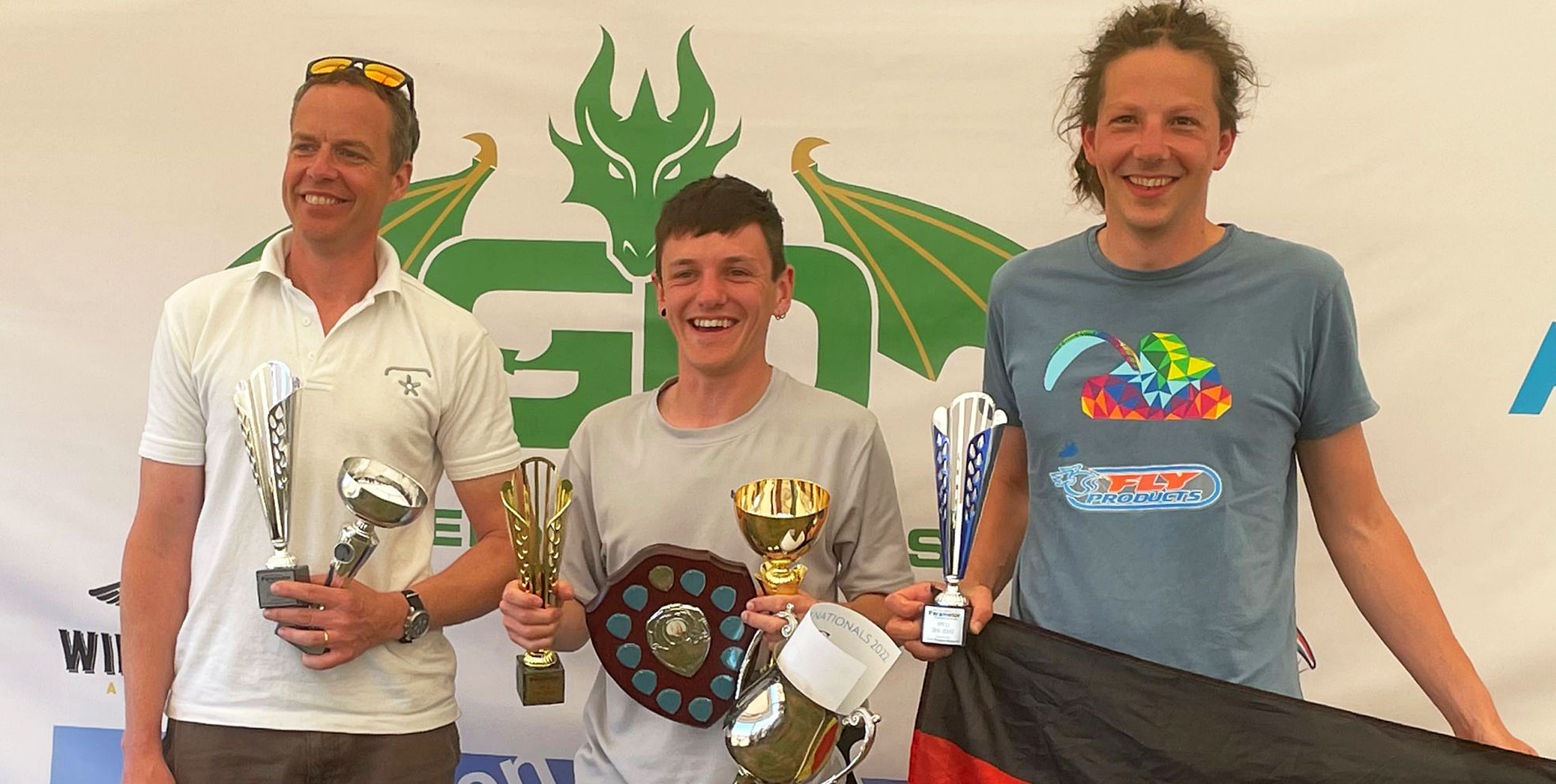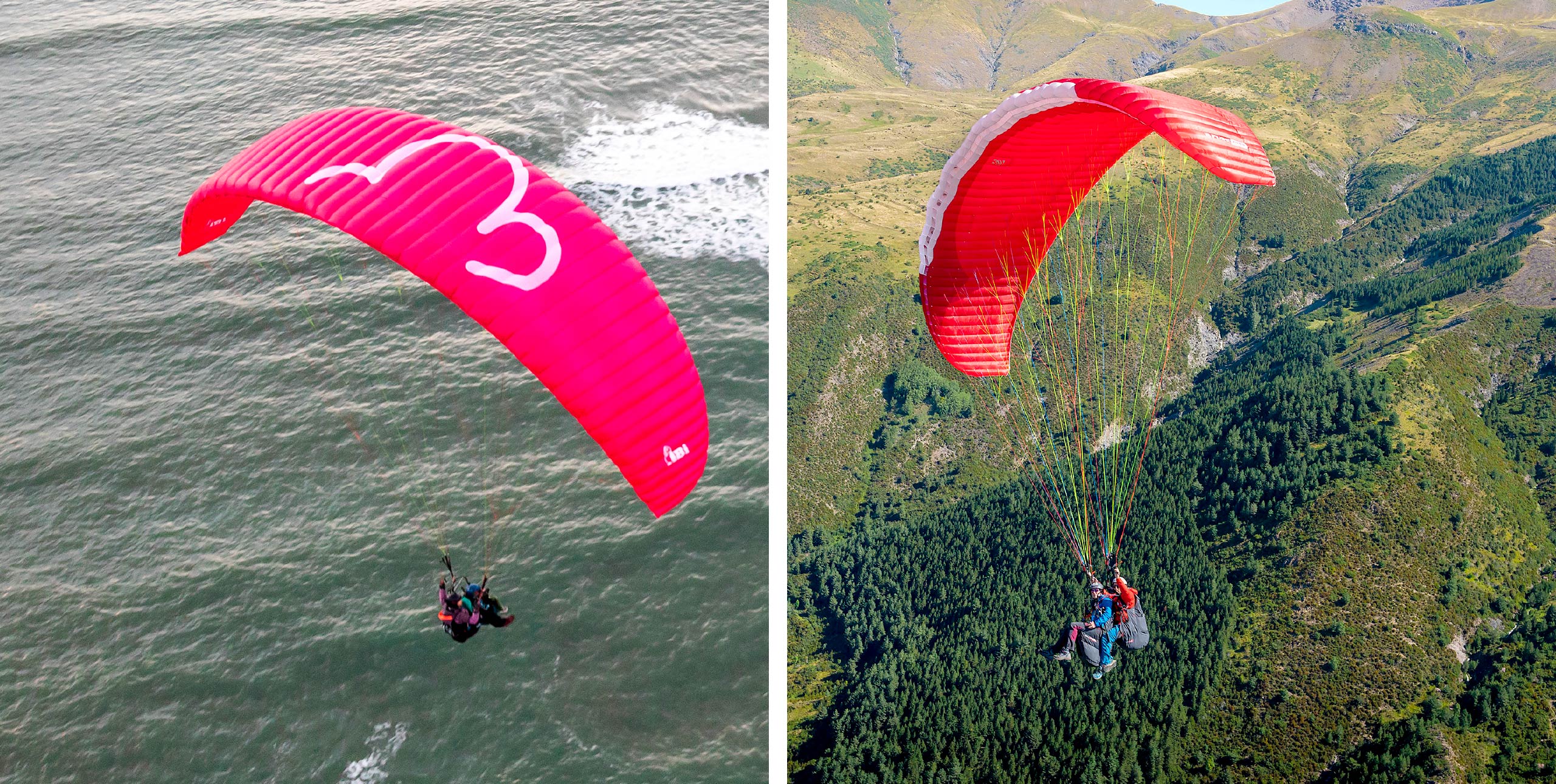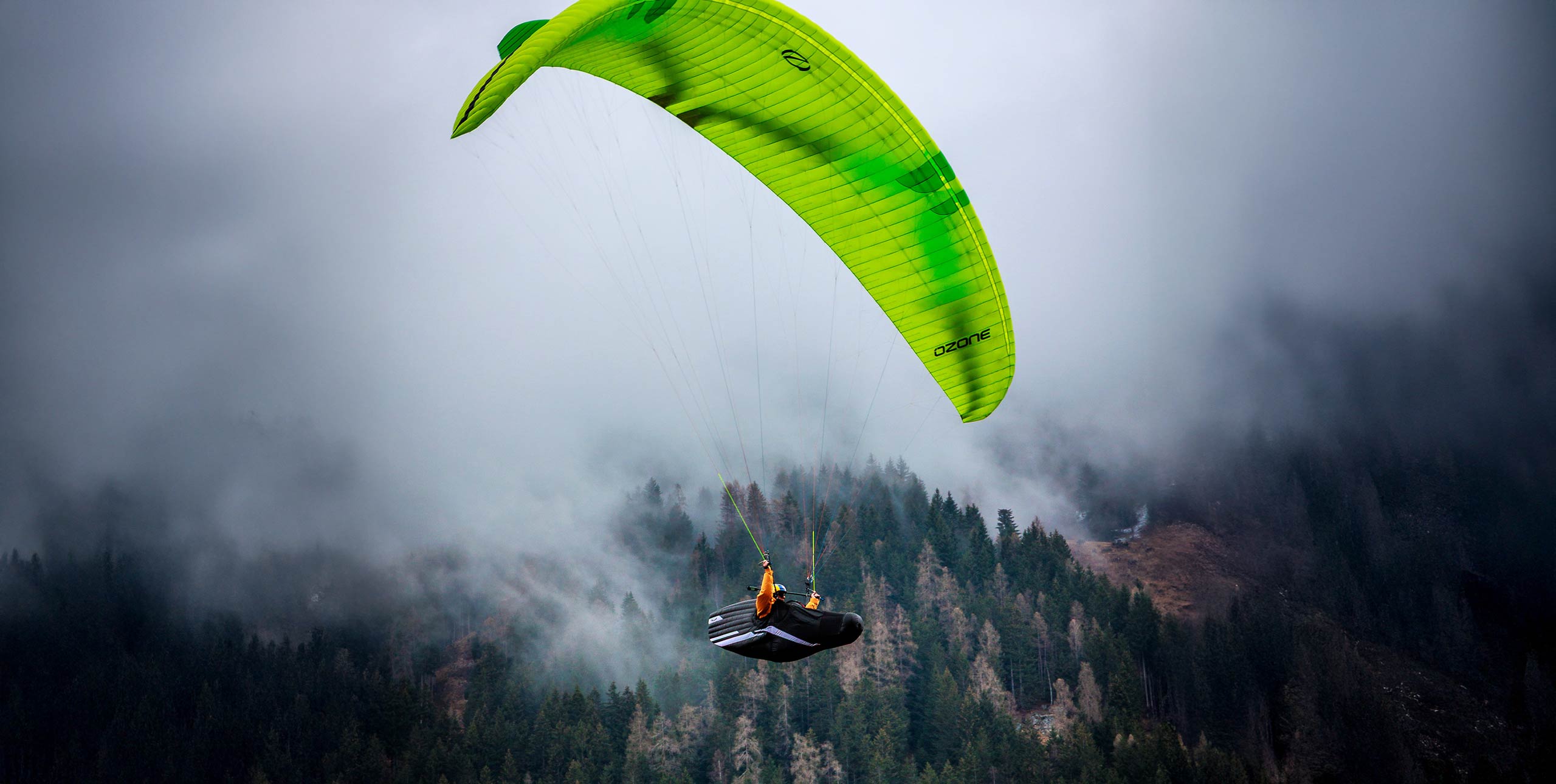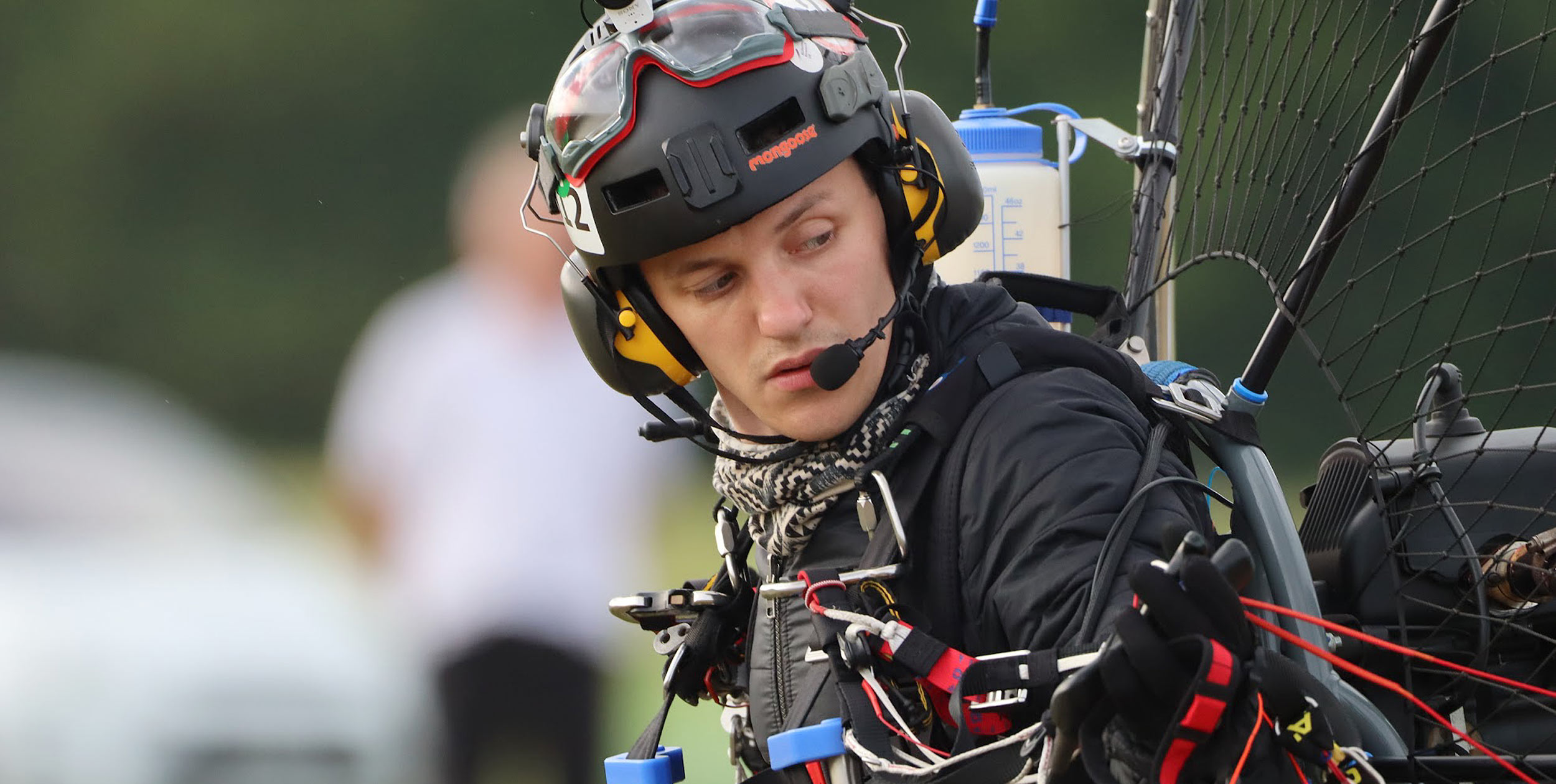
Trike pilot Shaun Favell gives his impressions of competing in the British Open Paramotor Championship 2023 held at Marston Airfield, Kent in the UK in June. The competition was also the German Nationals.
In late June 2023, the skies of the quiet south-eastern rural community of Manston burst back to life with the latest addition to its impressive aviation history. Manston Airfield, a key RAF strategic base during WWII which defended us from Zeppelins and Gotha Bombers, and tested the Bouncing Bomb, was now home to the 2023 British Open Paramotor Championship.
Manston Airfield boasts a 1.7-mile runway and an open grass field large enough to play paramotor Quidditch. An unusually large space for the smallest of aviators who shared the venue with the Icarus Human Powered Aircraft Championship. As a lowly paramotor pilot, I felt proud to be recognised by this magnificent venue as a serious aviator.
The BOPC has been running since 1997, but since 2018 has been chaired by Barney Townsend who has been working to improve the endurance format. This year’s championship saw record attendance with 70 pilots entered and was the first year there were enough trike pilots to open a new trike class. Many pilots came to experience the competition for the first time, most entering the main open championship, but many entering the discovery challenge; a class aimed to help acclimatise and educate novice and club plots to competition flying.
My entry was in the Open Trike class, which boasted seven entrants. My lack of competition experience would have best seen me in the Discovery challenge, but I had enough paramotor experience to manage the Open Class safely and decided to go all-in. After committing myself during a period between paramotor ownership, I had much to do to take part. I did receive some help along the way from Discovery Paramotors in Australia who provided me with a prototype Discovery 4 Retracta frame, and to this I fitted a new Minari 200cc engine. After several weekends of toil, I emerged from the garage with a fully functioning paramotor trike, but little time for testing. Bad weather and a hectic work schedule barely gave me time to run in the engine, and I headed to the championship with less than five hours on the trike and wing.
The six-hour drive from my home in Lincoln to Manston in Kent gave me ample opportunity to reflect on the task ahead. It was my first competition, and I was entered mainly for the experience, the goal being to not break any equipment, though the unrealistic dream of being on the podium did linger in my mind. I arrived Tuesday evening in my motorhome, fully equipped with a wife, no dogs, and more than a couple of beers in the fridge. The first competition day wasn’t until Thursday, so the time available was reserved for briefings, kit checks, signing wavers, and getting in some flying to orientate ourselves to the area. Non-competition flying was moderated to protect the locality from 70 over-excited pilots, so a pre-flight briefing was mandatory. The first available to me was the Tuesday evening but driving fatigue and a touch of apathy had me sitting in my deckchair watching the activities while clutching a cold bottle of welcome beer.
The following morning, I awoke refreshed and ready to get myself into gear. The campsite was filling up, and there was a great deal of social interaction and nattering. It was difficult to make my way to the briefing tent without being stopped several times by familiar faces not seen since the last fly-in. There was a fantastic international turn out, with people coming from as far as Japan. When I eventually reached the tent, I guiltily took a one-to-one briefing from Barney to allow me to fly that morning.
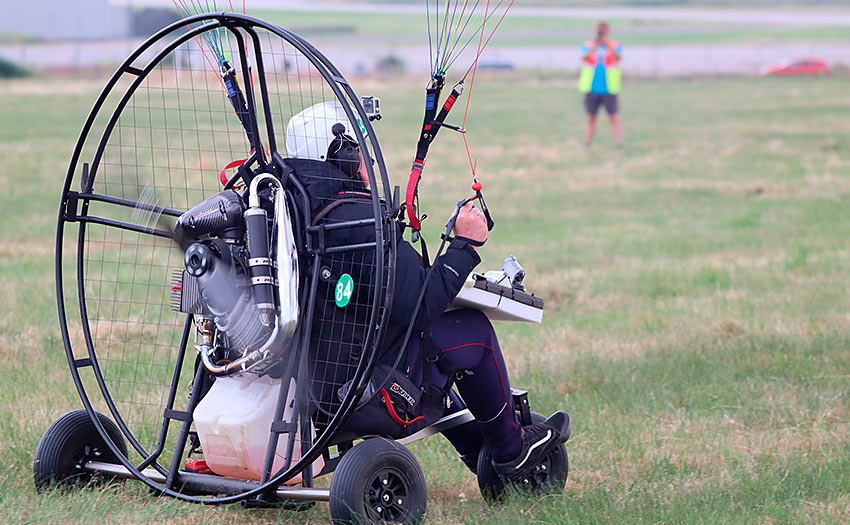
The Wednesday provided us with two non-competition flight windows, one in the morning and one in the evening. This provided me the opportunity to test my home-built map board: a large rectangular polystyrene lid from a fish container, decorated with various competition-necessary equipment, fastened on with Velcro and tie wraps for added security. This I fastened to my leg straps with a short bungee cord and hoped it would stay in place. Sadly, on my first flight, it didn’t. It slipped down to my shins acting more like an airbrake than a map board. I decided to cut my first flight short by turning it into a spot landing practice from 500ft. That, at least, seemed to go well, perhaps the airbrake helped. Those more competition savvy made the most of the time, some taking the opportunity to fly the whole competition area gaining valuable recon on the local geography, and likely covering more miles of flight than would become available during the competition flying as the weather the next day looked bad.
The Wednesday evening brief, which officially opened the competition and gave thanks to the marshals and sponsors, concluded with a flight window forecast for the next morning as “highly unlikely”. Equipped with newly acquired A3 colour printed Ordnance Survey maps, we departed to our preferred areas of preparation and proceeded to highlight the faintly marked tracks and cover them with plastic film. The unlikely flight window scheduled for the next morning at 7am gave of us less than 7.5 hours to prepare, plan, and sleep. Gambling on not being able to fly I invested the available time on producing a map worthy of any cockpit, and eventually got into bed at about 01:30. Sleep beckoned, and safe in the knowledge there would be no morning flying I greased my way to slumber with another bottle of beer. I closed my eyes thinking, “I love competitions”.
Being at that age where there’s an exponential relationship between the number of beers drunk and the visits made to the toilet during the night, I made my way to the bathroom for the fourth time that morning. Blinking through tired eyes I surveyed my phone for any new activity referencing the day’s agenda. In the announcements group was a message from Barney sent at 06:30, only seven minutes prior, saying: “The flight window is open, briefing at 07:00”. My commitment to the competition was tested as I looked at the place I had been sleeping. It could have gone either way, but I quickly dressed, grabbed my jacket, and stumbled towards the briefing tent thinking, “I hate competitions”. My phone pinged again in the group chat, this time it was a video message from last year’s champion Daniel Jones. “To come first you must be first,” he taunted with a knowing grin while simultaneously showing us the empty briefing tent where only he was present.
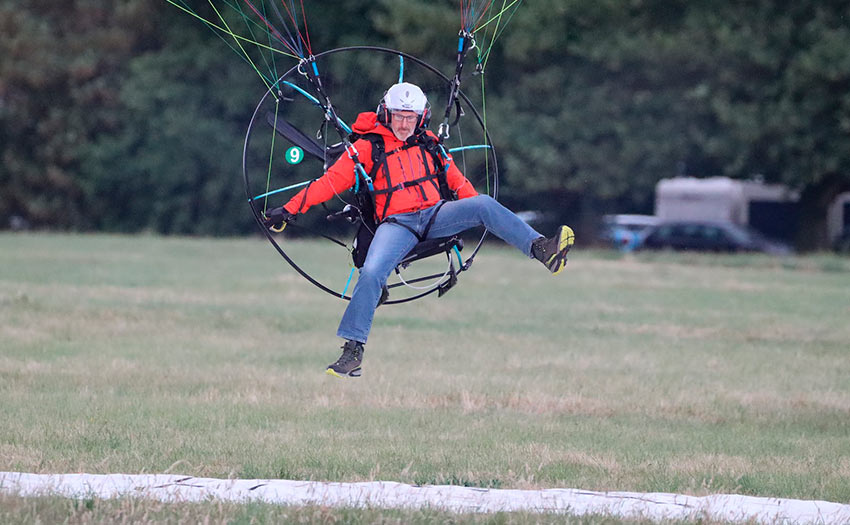
The tent quickly filled with a strange mix of varying enthusiasm. Dan took up his usual place at the front, and I stayed at the back. The morning was planned for navigation tasks, which include the Snake, the Constant Speed, and the Declared Time, as well as bonus points for picking up additional turnpoints in between. Given the declared time and constant speed required advanced planning and declaration of times to the scoring team, I was restricted to the snake and turnpoints as I’d not made any declarations. It was my first competition and I planned to start with the simpler tasks. I tried my best to look keen for the morning activities, but really, I would have preferred an extra hour or two for the re-alignment of my competition chakra. My favourite weather app notified me of imminent rain, and I looked at the sky in hope. The competition gods must have heard me; as I made my way back to base the first drops of rain started, followed by an announcement declaring the flying window cancelled. Though I was secretly grateful for the opportunity to have breakfast and my morning coffee, it was to the disappointment of many who were keen to get the competition underway. I am sorry!
The first opportunity to fly finally arrived in the late afternoon, when the rain was replaced by a change in the wind. With a three-hour window announced, the field burst into activity, and pilots quickly booked out at the marshal’s tent and joined their queue in the take-off stack. The wind had swapped directions, and the previous departure through the southern competition gate now required a northerly take-off and a left turn to exit the other gate which was north-westerly to the field. This caught some pilots off-guard, with several flying north of the gate and losing twenty percent of their points as penalty. Of the three hours available I made the most of an hour and twenty minutes, but mental fatigue and losing my precise location prompted me to make my way back to base, but still with a great sense of achievement. There’s something unusually exhilarating about flying trimmed out, scribbling your last known position on an OS map, having both hands off the brakes and inside the risers clutching your pens, while you try to ignore the turbulence and trust the wing to keep you safe. Feeling yourself go light in your seat while holding a Staedtler highlighter for comfort was a first-time experience for me. While the goal for many was to win, for me it was to acclimatise myself to the terror, which I did with a great sense of satisfaction.
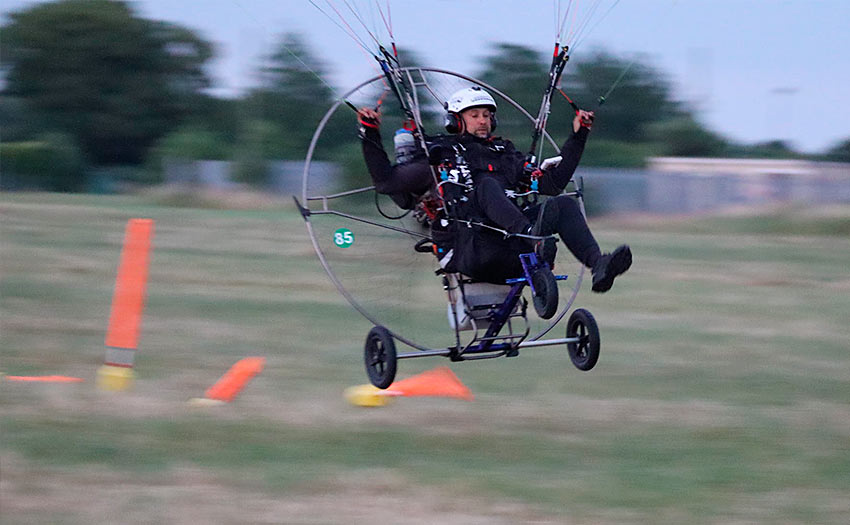
Once back on the ground I felt the urge to recount my adventure to anyone that would listen. Many pilots were already down, but the serious contenders were still in the air, squeezing every point out of the available time. The final minutes saw the competition leaders return, and the first competition window closed with a new collection of experiences to share during the evening’s social interaction. I was proud to be part of the exchange of competition anecdotes and stories of personal ineptitude which helped replace my imposter syndrome with a sense of comradery.
The next morning, I awoke to the sounds of flapping banners and clanking awnings. The winds were gaining strength, but the flight window was open. The winds were too strong for precision tasks such as spot landing and skittles, so it was to be another navigation morning. The forecast was poor however; the winds were due to increase as the morning progressed. Those with foresight and experience were in the air as soon as the 07:00 window was open making the most of the calmer take-off winds, but for me the combination of morning procrastination and refuelling saw me in the take-off stack at 08:30. There were two other trike pilots ahead of me, both of whom didn’t attempt the strong wind take-off. With some experience of windy take-offs I felt confident to try, but was defeated by a lack of throttle commitment on my first attempt. A concerned looking marshal and a now empty airfield convinced me not try a second. Points were gained that day by pilots who had the experience to know how to make the most of the weather window and to go early. I felt disappointed in myself for not taking this initiative too, and I realised that competitions are won by pilots with competition mentality as well as pilots who fly well. This I had openly entered the competition without, but it was now starting to grow inside me.
The three-hour competition window closed ninety minutes later, again seeing the top of the table arrive with minutes to spare. Many appeared stationary in the air as they slowly descended in the strong headwind. Among these was the current champion, Dan Jones, who shortly after landing looked very tired and pale. Lying supine on the ground with his eyes closed, he described being airsick and almost vomiting as the air aloft had been very turbulent. The winds that day didn’t ease, and conscious of keen pilots being constrained to the ground for the remainder of the day, there were several non-competition activities arranged to help keep the morale strong. Spirits were raised watching pilots fighting their wings during a fun groundhandling event that had a few pilots looking less than graceful. A show-and-tell had been organised giving entrants opportunity to show off and discuss their aircraft, and Mark Shaw from the BHPA gave a couple of lectures on a variety of paramotor-related subjects. Ric Womersley and Dan Jones also gave a talk about the British paramotor squad for which they are looking for new recruits.
The forecast for the Saturday didn’t look promising, and winds were rattling through the camp. Many, like me, had entered the competition for the experience, most of whom were in the Discovery challenge. For these pilots, the prediction of ‘no more flying’ inspired a few to head off home early. Those who remained were now turning their attention to the Saturday evening festivities, where a bar and a band had been arranged. All that was required for the party to begin was confirmation that the competition was closed. There were two possible flying spots left, the Saturday afternoon and the Sunday morning. Sunday morning was not a popular window for most pilots as this would preclude them from the Saturday evening festivities but was held in reserve by the competition committee for such times there were not enough flying hours to validate the competition. The championship, however, was valid as more than the minimum of five hours’ flying had been achieved, but the lack of task variety questioned whether this slot would still be held open to make the competition fairer. Neither the economy tasks nor the precision tasks had taken place posing a difficult decision for competition organisers trying to prioritise the competition, but also wanting everyone to have a great experience. Then the competition gods had a sudden change of heart.
Perhaps they felt guilty for the Thursday morning’s rain, or perhaps it was just good fortune, but the winds dropped, and an unexpected competition window opened. In a final burst of activity, the precision tasks were on, albeit it with some disappointment for the discovery challenge who were not able to take part due to the small window available. The competition was closed on a high, and the evening festivities began. Much beer and music were indulged, and the socials lit up with images of pilots lacking sobriety, doing the conga, and participating on other high-spirited shenanigans. For some though, the festivities were moderated as the competition winners were yet to be announced. While there was little left to be done in the sky, many were keeping a keen eye on their scores ready to contest any points they felt missed or misallocated. The Sunday morning saw a few last-minute appeals and objections, before the official competition winners were finally announced.
This year saw Daniel Jones win the Open foot-launch class for the second time in succession. Dan, an upcoming pilot, has now won the championship twice out of the three times he has entered the main competition. He is destined to become a serious contender in the world events. The winner of the new trike open class was Carlos Oscar Lemos Carrel. Well done to both of you, and well done to everyone placed. While it’s easy to recognise the talent and commitment of all those who found themselves on the podium, huge congratulations must be given to all who took part. Many, perhaps, didn’t do as well as they hoped, and many will have done better, but everyone I believe, will have come away from the 2023 British Open Paramotor Championships a better pilot. Even me!
Results
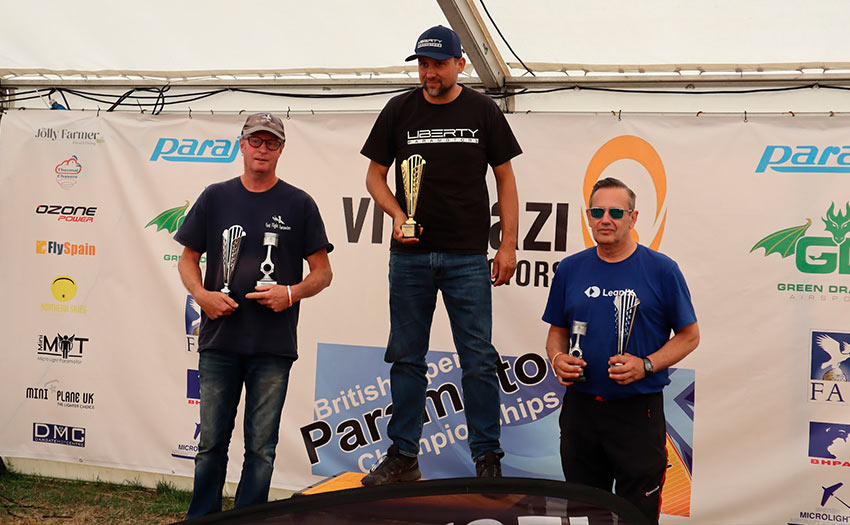
British Open Paramotor Championship PL1 (solo Trike):
1st Carlos Oscar Lemos Carrel
2nd Alex Anderson
3rd David Messenger
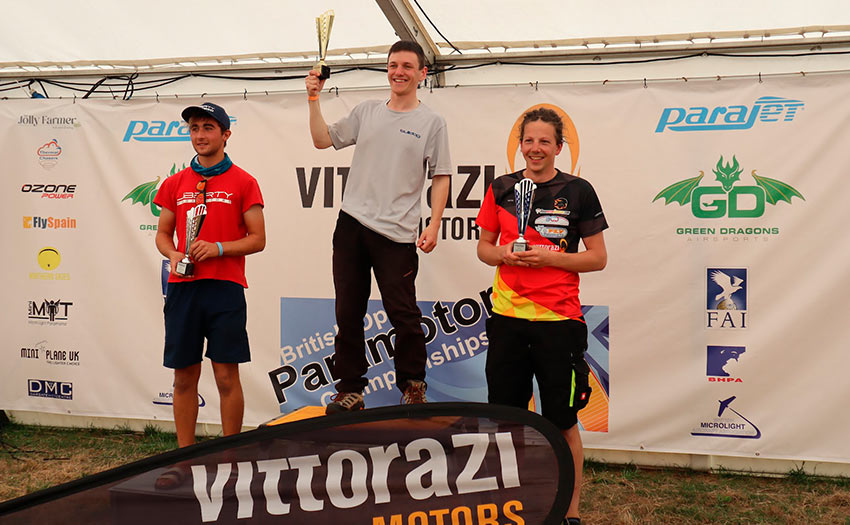
British Open Paramotor Championship PF1 (solo Footlaunch):
1st Daniel Jones
2nd Bruce Daniels
3rd Benedict Bös
British National Paramotor Championship PL1 (solo Trike):
1st Alex Anderson
2nd David Messenger
3rd Francis Rich
British National Paramotor Championship PF1 (solo Footlaunch):
1st Daniel Jones
2nd Bruce Daniels
3rd Oscar Haynes
Discovery Challenge PL1 (solo Trike).
1st Tim Dougall
2nd Paul Hunnisett
3rd Koen Demeyer
Discovery Challenge PF1 (solo Footlaunch)
1st Sam Taylor-Jones
2nd Paul Taylor
3rd Tyron Paul
German National Paramotor Championship PF1 (solo Footlaunch):
1st Benedikt Bös
2nd Lars Mielke
3rd Nils Von Samson Himmelstjerna
Best Newcomer: Bruce Daniels
Best Precision Flying: Ric Womersley
Barry Holleran Navigation Trophy: Daniel Jones
Dan Burton GB XContest Trophy: Daniel Jones
Johan Bossuyt trophy for outstanding contribution to the paramotor community: Andy Shaw
Full results at ppgcomps.co.uk


